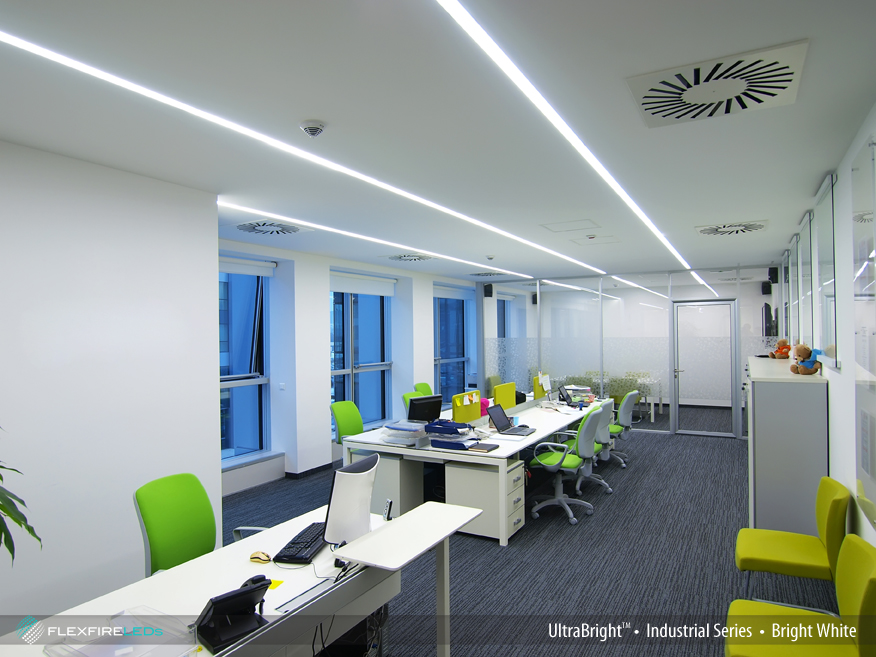

While most LED strip applications do not involve contact with human skin, if your specific project does, you will want to take precautions to ensure the LED strips are not directly accessible to humans or animals. Do note that some LED strips, including Waveform Lighting LED strips, rise to temperatures above the threshold for causing low temperature burns.

Objects that are at 40☌ (104☏) or higher will feel "hot" to the touch, and temperatures over 50☌ (122☏) can begin to cause burns on human skin. Below are three common concerns about LED strips and thermal properties: 1) Is it too hot for humans or animals? It can be difficult to know whether an LED strip is "too hot" for a particular application without setting some general guidelines on temperature ranges and specific concerns with respect to heat. In other words, for an LED strip in a typical room temperature environment of 75☏ (24☌), you can expect the LED strip to reach a temperature of 129☏ (54☌). We have measured a typical temperature rise of 54☏ (30☌) over ambient temperatures. Waveform Lighting LED strips are considered high power and high density, and therefore have a higher temperature rise than typical LED strip lights. How warm an LED strip gets during operation will depend on the LED strip design and quality, as well as the ambient temperature. WE CANNOT BE HELD RESPONSIBLE FOR ANY INJURIES OR DAMAGES THAT ARISE FROM THE USE OF THE INFORMATION SHOWN BELOW.

How warm is acceptable? Is it safe? CAUTION: THE INFORMATION BELOW IS INTENDED FOR EDUCATIONAL AND REFERENCE PURPOSES ONLY. (High CRI LEDs are slightly less efficient than their standard counterparts, partially because they attempt to cover some of the red and deep red wavelengths, necessary for accurate color rendition). Also working against incandescent bulbs is the low efficacy of the light energy emitted, where much of the energy is in longer wavelengths such as deep red and and infrared wavelengths, which do not contribute much, if at all, to illumination.

You might be surprised to find that LEDs are not as efficient as you first thought! But the efficiency values of LEDs are indeed far superior to incandescent bulbs, which have efficiency values of 5% or less. This means that a 90 watt LED strip light reel will emit 63 watts (90 watts x 70%) of thermal energy - approximately the same amount of heat as a 60 watt incandescent bulb, which as you may recall from experience, certainly gets quite warm. As a result, typically, you may see LED strips run at 30% efficiency. With LED strips, additional components as well as inherent resistance in the circuitry can reduce the efficiency values even further. illumination), and the remaining 60 watts are released as heat. This means that for a typical LED with 40% efficiency, given every 100 watts of electrical input, only 40 watts worth of energy is released as useful light energy (i.e. LEDs typically have efficiency values between 30% and 50%. When we talk about efficiency values, they are typically expressed as a percentage, which indicates the proportion of electrical energy that is converted to useful light energy, vs the portion that is wasted as heat energy. LEDs are indeed far more efficient than traditional lighting technologies, but they are still quite inefficient in absolute terms. But given what everyone says about LEDs running cool and efficient - why do LEDs get warm in the first place? Is it normal for LED strips to get warm or hot to the touch? Why is this happening? How hot is safe? Read on to find out! First of all, it is normal for LEDs to get warm. So, you might be surprised to observe an LED strip light get warm or hot during operation. You might often see LED technologies being touted for having lower heat output and higher efficiency.


 0 kommentar(er)
0 kommentar(er)
